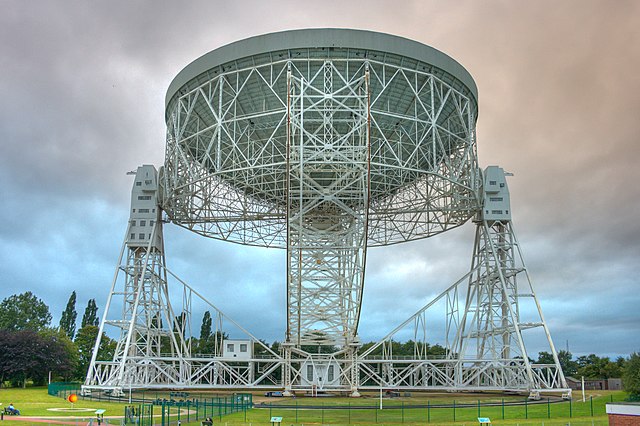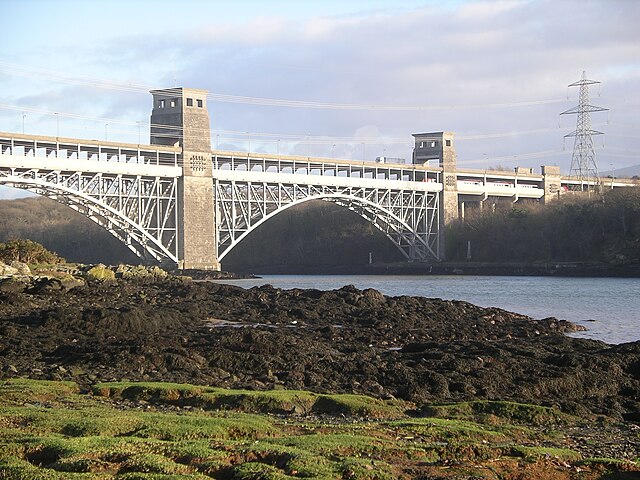Sir Henry Charles Husband, often known as H. C. Husband, was a leading British civil and consulting engineer from Sheffield, England, who designed bridges and other major civil engineering works. He is particularly known for his work on the Jodrell Bank radio telescopes; the first of these was the largest fully steerable radio telescope in the world on its completion in 1957. Other projects he was involved in designing include the Goonhilly Satellite Earth Station's aerials, one of the earliest telecobalt radiotherapy units, Sri Lanka's tallest building, and the rebuilding of Robert Stephenson's Britannia Bridge after a fire. He won the Royal Society's Royal Medal and the Wilhelm Exner Medal.
Lovell radio telescope at Jodrell Bank
Construction of the 250-ft telescope
Britannia Bridge after rebuilding
The Lovell Telescope is a radio telescope at Jodrell Bank Observatory, near Goostrey, Cheshire, in the north-west of England. When construction was finished in 1957, the telescope was the largest steerable dish radio telescope in the world at 76.2 m (250 ft) in diameter;
it is now the third-largest, after the Green Bank telescope in West Virginia, United States, and the Effelsberg telescope in Germany.
It was originally known as the "250 ft telescope" or the Radio Telescope at Jodrell Bank, before becoming the Mark I telescope around 1961 when future telescopes were being discussed. It was renamed to the Lovell Telescope in 1987 after Sir Bernard Lovell, and became a Grade I listed building in 1988. The telescope forms part of the MERLIN and European VLBI Network arrays of radio telescopes.
The Lovell Telescope
The Mark 1 under construction. Credit: Jodrell Bank.
The Mark 1 under construction. Credit: Jodrell Bank.
The Lovell telescope mid-resurfacing in 2002.





